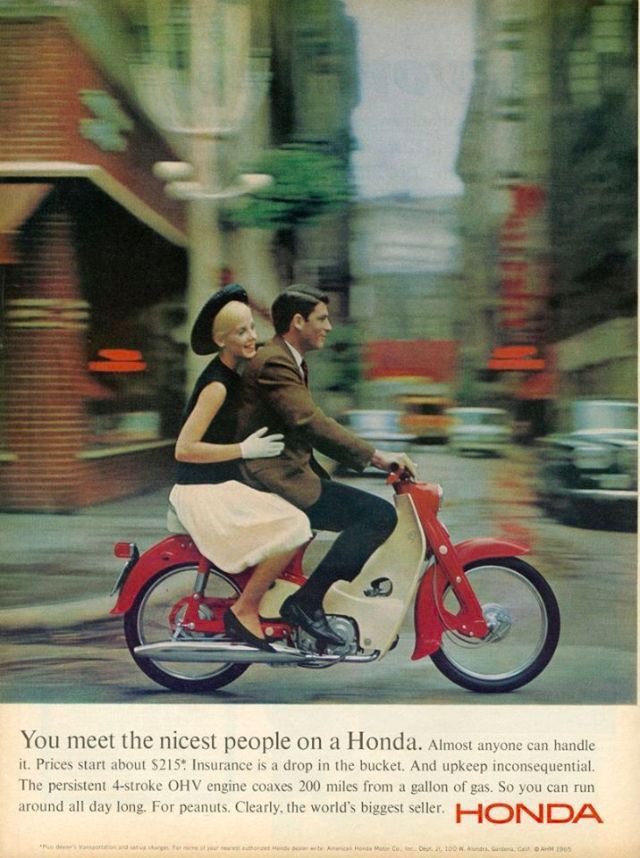
An epitome of great Product planning, backed by solid engineering and marketing. Since its launch in 1958, it has crossed sales of 100 million in 2017 making it the most produced motor vehicle in the history.
Recognition of opportunity: Takeo Fujisawa, a business person and a close associate of Honda’s founder, Soichiro Honda visited Europe in and around 1955 a number of times. He observed that consumers in postwar Europe typically went from a bicycle to a clip-on engine, then bought a scooter, then a bubble car, and then a small car and so on. Motorcycles with its imagery of Leather wearing macho riders did not fit in the pattern for the average person, Scooters on the other hand were complex to maintain and did poorly on badly maintained or nonexistent roads because of their small wheels. He saw an opportunity to change that with Honda Cub. It was launched in 1958 and has gracefully evolved through time from a modest C50 to today’s C125.
Solid Design and Engineering: Throughout its evolution, the Cub stuck to its original promise of simple design, graceful riding (protecting the rider’s legs from wind and road debris, as well as hiding the engine from view), better road response with less un-sprung mass of engine (mid-frame mounted engine), great handling, Stability on bad roads (17” wheels), clutchless gear-shift, minimum maintenance and high reliability. The powertrain has evolved from a humble 49 cc to 125 cc today with modern upgrades like ABS, Front disc brakes and LED lamps.
Advertising that became a case study for the times to come: The Super Cub’s US advertising campaign, “You meet the nicest people on a Honda”, was highly successful creating a lasting impact on Honda’s image and on American attitudes to motorcycling.
“Meeting the needs of the time, creating trend and cult of its own, meaningful evolution
through time has led the success of Super Cub”
